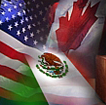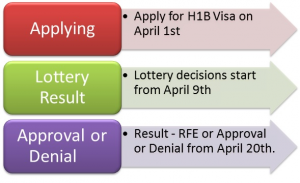Due to the retrogression of employment based visa numbers particularly after 2007 many individuals have pursued Eb2 PERM labor certification designs to jump to the front of the waiting line. This preference remains true even under the changing circumstances that are now present with the Visa Bulletin moving forward. A better understanding of the Eb2 PERM design requirements and necessity can help an individual to evaluate both their eligibility and need for this kind of residence case.
To be qualified for an Eb2 PERM design, the individual applicant must have either a qualifying master’s degree, or in the alternative a bachelor’s plus 5 years of experience related to the job offer. Qualifying degrees are required, and unaccredited programs or 3 year bachelor’s degree programs may lead some down the wrong path. The individual must have an accredited degree or foreign equivalent based upon a credible evaluation service opinion. Work experience must almost always be from a prior employer to be deemed qualifying. There may be exceptions to this simple review of the basic requirements. At the same time, if the individual has the objective of the speediest path to completion of an Eb PERM approval, taking a high risk approach with aggressive requirements could lead to long delays and even denial by US Department of Labor [USDOL] or later by USCIS of an I-140 immigrant petition.
If the individual is adequately qualified to benefit from an Eb2 PERM design then the analysis should turn to the offered PERM occupation or job offer. It is simple to understand that a job offer as a cook would not support a requirement of a master’s degree. One can view publications from the USDOL that provide guidance of the most common educational preparation for various occupations such as the Occupational Outlook Handbook. An occupation or position that generally does not support a master’s level of education could lead to challenges, delays and a USDOL denial for a requirement that is unduly restrictive to other US workers. At this stage again one must weigh the possible advantage of an Eb2 approval against increased risk of USDOL challenges or even denial of the PERM due to the advanced degree requirement.
As a condition precedent to undertaking required PERM recruitment steps, an employer must obtain approval of an ETA 9141 Application for Prevailing Wage Determination. During this initial process, the employer specifies the occupation and minimum requirements that they desire for the job offered. If USDOL is in agreement with the preliminary design a wage determination is issued or approved by the agency upon which an employer can rely. It is logical to point out at this stage that the more advanced the requirements such as the degree and/or minimum experience required the higher the wage determination will be. Employers must pay more wages for highly qualified workers to fill advanced degree occupations.
Even in PERM evaluations where the individual may have the required degree or degree with experience, and an occupation that can support the advanced degree design, the employer must also be in agreement to proceed. In working with Eb2 designs and employers the initial review of the offered wage rate becomes an important starting point. Advanced degree designs will again command higher prevailing wages for the underlying job offer. Most employers are unwilling to proceed with a PERM design where the underlying prevailing wage is substantially higher than the actual wage paid now to the individual or likely to be paid in the near future. Informed employers are unlikely to proceed with a PERM matter and design where they do not anticipate making a written “offer of employment” to an individual at a prevailing wage this is well above that now paid for the individual’s occupation. Wages are very important to employers and actions that tend to result in any movement toward significantly higher wage issues will likely be avoided by them.
When an Eb2 PERM design isn’t likely to be the right path for an individual there are still good reasons to not delay and to proceed with an Eb3 PERM design promptly. One important reason to move on with an Eb3 PERM design is that the waiting lines for Eb3 workers have been shrinking rapidly over the past year. For a discussion see the article: EB Worldwide Quota Progression of October 16, 2014. Rarely one is rewarded by delay in the US immigration context. Also, when one has an approved Eb3 PERM and I-140 petition, they keep their priority date thereafter. This means that a subsequent PERM that could support an Eb2 design or a new PERM required due to a change of employer will recapture that initial priority date. Also, having an Eb immigrant matter correctly filed or approved may be necessary for H-1B extensions beyond the 6th year in that status. Natives of India and China have unique quota issues that may justify more aggressive PERM approaches. For other immigrants, an Eb2 design may be preferable but not necessarily the best design in each case.







